Meat Shop Quality: What Sets Them Apart?
When selecting quality meat, many consumers face a significant challenge: how to distinguish between options that truly stand out. This article delves into critical aspects of meat shop quality, including the impact of sourcing and supply chains on products such as top sirloin and ground meat, as well as the importance of evaluating freshness and taste profiles. Readers will gain valuable insights into the difference between pasture-raised and feedlot animals, and understand how expertise in the butcher shop plays a vital role in quality assurance. This knowledge will empower consumers to make informed choices for their culinary needs, ensuring that every meal is both delicious and satisfying.
Key Takeaways
- Quality meat emphasizes marbling, nutrition, and ethical treatment of livestock
- Transparency in sourcing builds trust between consumers and meat shops
- Skilled butchers enhance meat quality through expert preparation and customer service
- Seasonal availability impacts freshness and flavor of meat products
- Consumer education drives informed decisions, fostering loyalty to premium meat establishments
Understanding Meat Shop Quality Standards
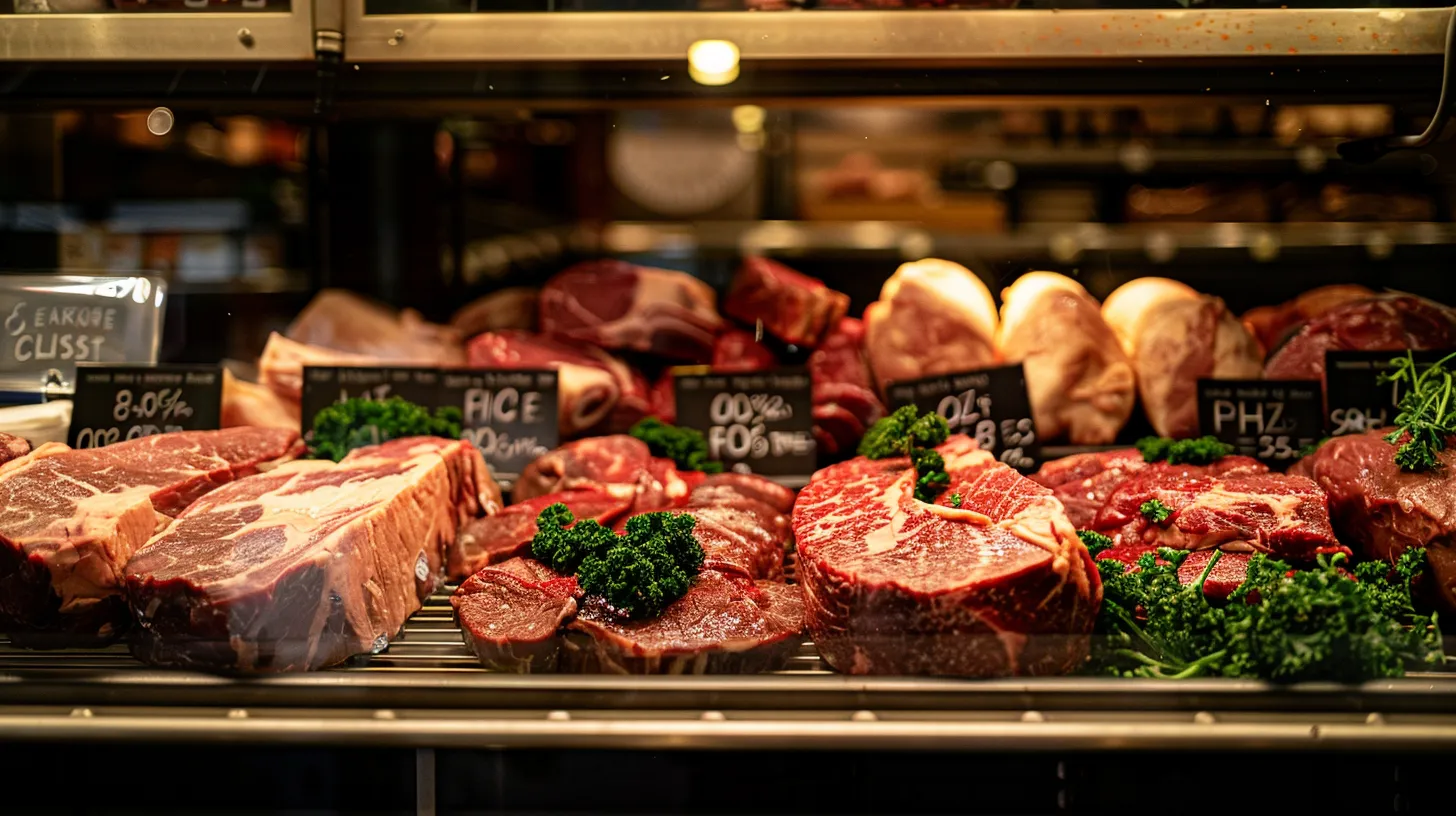
Quality in meat products encompasses various factors, including the definition of superior cut characteristics, the impact of grain-fed versus grass-fed cattle, and the importance of inspections and certifications. Consumers expect transparency and reliability from meat shops, including clear information about brands and sustainable practices. Highlighting our specialties and ensuring your shop appears as a top choice when customers search for meat market near me will reveal what distinctly separates premium meat shops from others.
Defining Quality in Meat Products
Quality in meat products can be defined by several key attributes, particularly for cuts like sirloin steak and bacon. These attributes include the marbling within the meat, which contributes to flavor and tenderness, and the conditions under which the livestock are raised. Grazing practices, whether on expansive ranches or smaller farms, can significantly influence the overall quality of the meat, with grass-fed options often delivering distinct flavors that appeal to discerning customers.
In addition to the raising conditions, consumers are increasingly concerned about the sourcing and handling of meat. For premium meat shops, quality assurance also encompasses meticulous inspections and certifications. Establishments that prioritize transparency about their sourcing practices and provide detailed information about the livestock‘s diet and living conditions demonstrate a commitment to excellence. This dedication not only fosters consumer trust but also sets these shops apart in a competitive landscape.
- Key attributes of meat quality
- Influence of grazing on flavor
- Importance of livestock sourcing
- Role of inspections and certifications
- Building consumer trust through transparency
Key Factors Influencing Meat Quality
The price of meat is often a key consideration for consumers when selecting a meal. High-quality cuts, such as flat iron steak and patties, are priced based on various factors including the livestock‘s diet, breeding, and overall treatment during their raising. As a result, premium meat shops that invest in sourcing quality products tend to see a correlation between price and consistent flavor and tenderness, providing customers with a superior dining experience.
Customer service also plays a pivotal role in establishing meat shop quality. Knowledgeable staff can guide customers in selecting the right cuts for their meals, ensuring they fully understand preparation and cooking techniques. This level of engagement builds a relationship based on trust and satisfaction, making the customer more likely to return for future purchases. Premium meat shops recognize that attention to both product quality and service significantly influences consumer loyalty and overall perception of value.
The Role of Inspection and Certification
Inspection and certification play a crucial role in defining the standards of quality in a meat market. Before products like bratwurst or poultry reach the consumer, they undergo strict evaluations to ensure they meet health and safety guidelines. These processes help ensure that livestock is raised without excessive hormones, providing customers with peace of mind regarding the products they choose for their meals.
For customers seeking trusted sources in their local meat market, understanding inspection and certification details fosters confidence in their purchases. Premium meat shops often share their certifications, showcasing their commitment to quality. By transparently communicating their practices, these establishments differentiate themselves in a competitive landscape, ultimately enhancing customer satisfaction and loyalty.
What Consumers Expect From Meat Shops
Consumers expect meat shops to provide clear information about the sourcing of their products, including whether the beef is grain–fed or grass-fed. There is a growing demand for transparency regarding livestock diets and nutrition, as customers increasingly seek high-quality meat options that contribute to their health and well-being. This knowledge not only influences purchasing decisions but also builds trust between consumers and meat establishments.
Another critical expectation among shoppers is the assurance that meats are free from harmful additives, such as nitrates, which can be present in processed meats. Many customers are also interested in how to pair their purchases, whether it’s finding the right sauce for a particular cut or understanding appropriate cooking methods that maximize flavor. By addressing these concerns, premium meat shops can enhance the overall shopping experience, ensuring customers feel informed and satisfied with their selections.
Quality means little without freshness. The best cuts can only shine when their taste tells a true story.
Evaluating Freshness and Taste Profiles
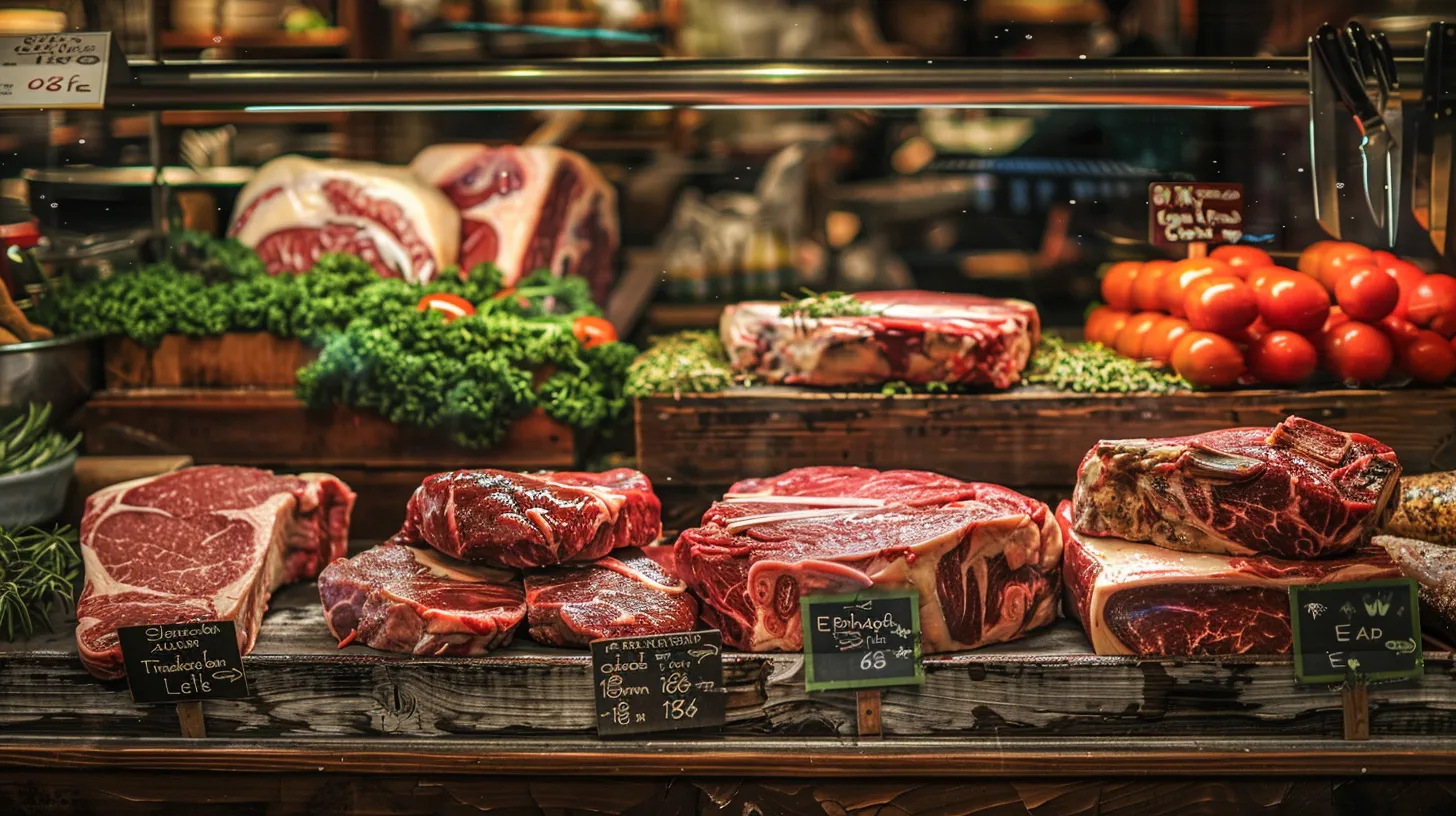
Freshness in meat is essential, with clear signs to identify, including color, texture, and firmness. High-quality beef, including cuts from calf, offers distinct taste characteristics shaped by preparation methods. Additionally, the aging process plays a significant role in enhancing flavor profiles. Understanding these aspects not only informs consumers but also highlights the nutritional value and quality in products like sausages.
Identifying Signs of Freshness in Meat
When assessing the freshness of meat, several key indicators stand out. The color of the cut of beef is a primary factor; fresh beef should exhibit a bright, cherry-red hue. Additionally, the texture is equally significant; high-quality meat should feel firm and elastic to the touch, without any excessive moisture or sliminess, ensuring the best selection for customers looking for butcher boxmeat.
Another way to evaluate freshness is by observing the packaging. Products offered in butcher boxes should be securely sealed, with no signs of leaks or damage. Consumers should also be mindful of the sell-by date listed, as this provides insight into the product’s longevity. By keeping these factors in mind, shoppers can have confidence in the quality and freshness of the meats they choose, enhancing overall satisfaction:
- Color of the cut of beef
- Texture and firmness
- Packaging integrity and sell-by date
Taste Characteristics of High-Quality Meat
The taste characteristics of high-quality pork, such as porkloin and pork chop, are significantly impacted by the animal’s diet and rearing practices. When pigs are allowed to forage in natural environments, they often develop richer flavors and a more tender texture in their meat. Premium cuts, while priced per pound, offer consumers an exceptional taste experience, highlighting the importance of sourcing practices in determining meat quality.
The Impact of Aging on Flavor Profiles
Aging meat is a specialized process that significantly influences its flavor profile. During this period, enzymes break down muscle fibers, creating a more tender texture and enhancing taste. This attention to the aging process, often conducted in controlled environments rather than factories, ensures a superior product. Consumers who appreciate the depth of flavor found in well-aged beef or pork can often tell the difference when cooking with fresh cuts.
Different types of aging, such as dry aging or wet aging, yield distinct results in taste. Dry aging allows moisture to evaporate, concentrating the flavors and giving the meat a rich, beefy taste that many chefs and home cooks cherish. Knowing this, customers can make informed choices at the meat shop, opting for aged options that promise both quality and enhanced dining experience.
- Importance of aging in meat quality
- Process of dry aging versus wet aging
- Impact of aging on taste and texture
- Choosing aged meat for superior flavor
How Preparation Methods Affect Taste
Preparation methods significantly influence the taste of meat, with simple techniques such as seasoning with salt and pepper playing a vital role in enhancing flavor profiles. For example, a well-grilled rib, seasoned appropriately, showcases the meat‘s natural juices and tenderness, offering a satisfying experience for diners. Furthermore, knowing the right cooking temperature can ensure meats retain essential vitamins, making the meal not only delicious but also nutritious.
The handling of meat prior to cooking also impacts its ultimate taste and quality. Vacuum-sealing meats can preserve freshness and enhance flavors, allowing marinating substances to penetrate more effectively. Additionally, adopting practices that prioritize animal welfare results in better quality cuts, as the stress levels during an animal’s life influence flavor and tenderness. Customers who seek premium meat appreciate the connection between preparation methods and taste, understanding that these details elevate their dining experience.
Freshness and taste shape the meals we cherish. Discover how sourcing and the supply chain play a critical role in ensuring that quality meats reach your table.
Sourcing and Supply Chain Impact on Quality
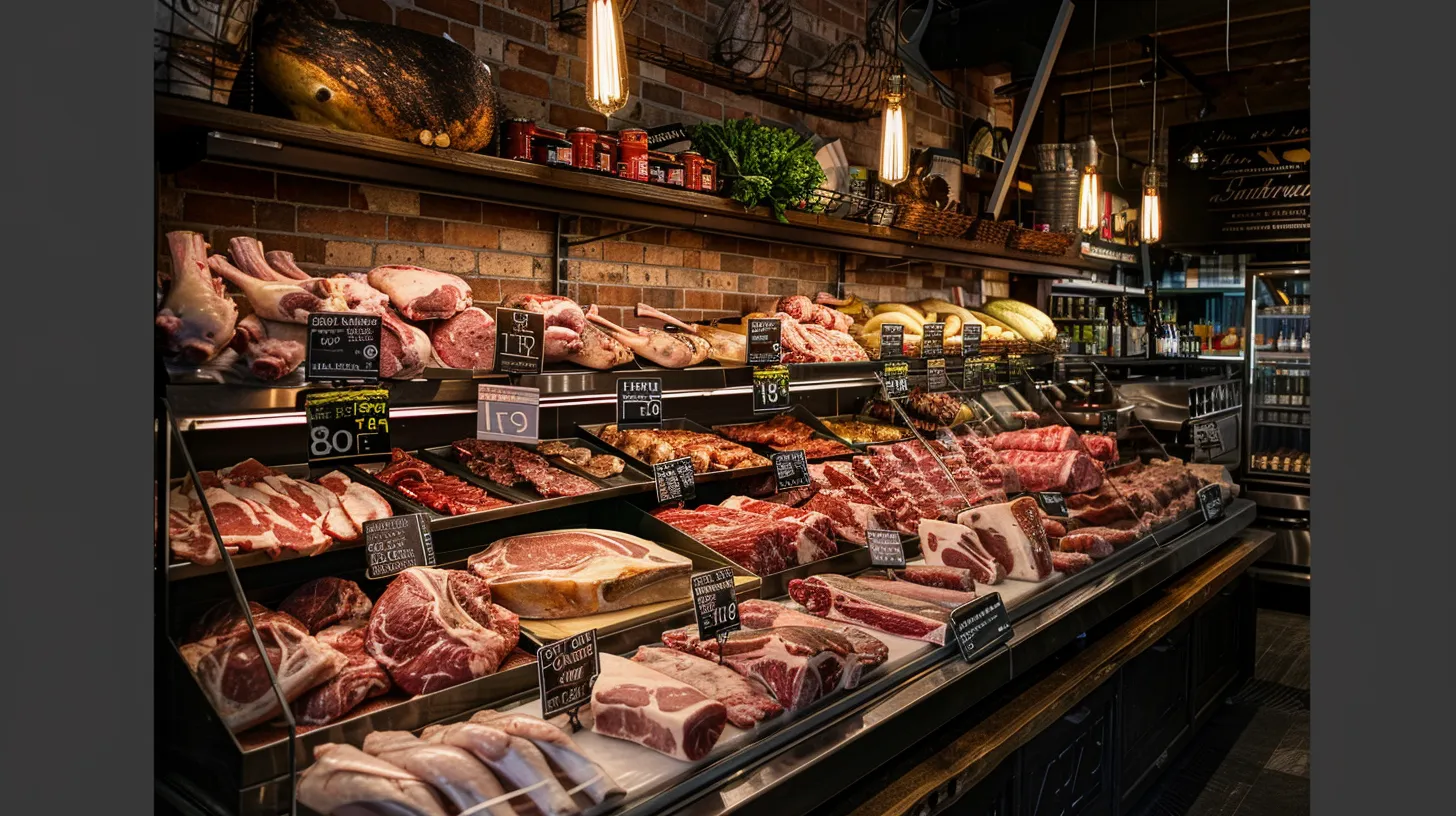
The sourcing of local versus imported meat significantly affects quality, as it influences factors like fat content and flavor profiles in cuts such as loin. Supply chain transparency is crucial, offering insights into antibiotic use and the animals’ diets, reflecting ethical treatment. Seasonal availability plays a role in ensuring freshness, directly impacting customer satisfaction and trust in their meat purchases.
The Importance of Sourcing Local vs. Imported Meat
Sourcing local meat, such as ground beef and veal, often results in higher quality products that benefit from shorter supply chains. This proximity allows for better monitoring of animal welfare and feeding practices, ensuring that meats retain superior flavor and tenderness. Customers who prioritize local options can enjoy fresher products, knowing they support local farmers and contribute to sustainability within their community.
In contrast, imported meat may face longer transportation times, which can compromise freshness and quality. While imported products might be more accessible, they often come with concerns regarding the sourcing practices and treatment of livestock. By choosing locally sourced meat, consumers are more likely to select ground beef and veal that adhere to high standards of quality, making informed decisions about their purchases and enhancing their overall dining experience.
How Supply Chain Transparency Affects Quality
Supply chain transparency plays a critical role in the quality of meat products. When customers have access to information regarding the sourcing of their meat, including the conditions under which animals are raised, they are more likely to trust the establishment. For instance, premium meat shops that openly share their practices—such as local sourcing and humane treatment—often find that consumers appreciate the commitment to ethical standards, which directly enhances their shopping experience.
Furthermore, transparency in the supply chain also addresses consumer concerns about antibiotic use and livestock diets. By ensuring that these details are communicated, meat shops can effectively reassure customers about the quality and safety of their purchases. This clarity fosters a sense of reliability and encourages repeat business, as shoppers feel more informed and empowered in their selections, leading to a loyal customer base that values transparency and quality in their meat products.
Evaluating the Ethical Treatment of Animals
The ethical treatment of animals is a fundamental aspect that distinguishes premium meat shops in the market. These establishments prioritize sourcing from suppliers who adhere to humane practices, ensuring livestock are raised in environments that promote health and well-being. This commitment not only reflects their dedication to product quality but also aligns with the growing consumer demand for responsible sourcing.
Seasonal Availability and Its Effect on Freshness
Seasonal availability significantly influences the freshness of meat products. During specific times of the year, local farms often harvest livestock, ensuring that customers receive meat at its peak quality. This approach not only enhances flavor but also provides assurance regarding the meat‘s nutritional value, as products are sourced promptly from nearby suppliers.
Furthermore, sourcing seasonal meats allows butcher shops to maintain a higher standard of quality by minimizing the time spent in transit. When meats are procured from local sources, shops can guarantee freshness, reducing the risk of spoilage. Employing these practices means that consumers can trust the quality of their selections while also supporting local economies and sustainable practices:
| Season | Meat Products Available | Quality Indicators |
|---|---|---|
| Spring | Lamb, Pork | Freshness at peak season, tender cuts |
| Summer | Beef, Poultry | Optimal flavor from high activity |
| Fall | Turkey, Venison | Rich flavors from natural foraging |
| Winter | Beef, Game Meats | Consistent quality, stored responsibly |
The journey from source to table reveals much about the meat itself. Next, the focus shifts to how different types of meat measure up in quality, an exploration worth having.
Comparing Quality Across Different Types of Meat

Understanding the quality of different meat types is crucial for discerning consumers. This section will cover beef quality classifications and their implications, pork quality standards that ensure safe and flavorful options, and the freshness criteria applicable to poultry. Additionally, it will compare various specialty meats, providing practical insights into their unique qualities and what sets them apart in terms of excellence.
Beef Quality Classifications and What They Mean
Beef quality classifications are essential in determining the overall characteristics and qualities consumers can expect from their meat purchases. The USDA grading system, for instance, evaluates beef based on marbling, maturity, and texture, resulting in classifications such as Prime, Choice, and Select. Prime beef, known for its high marbling and tenderness, is typically sourced from young cattle and is ideal for customers seeking the best available cuts for grilling or roasting.
Understanding these classifications enables customers to make informed decisions while selecting beef at their local meat shop. For example, Choice cuts may be slightly less tender than Prime but still offer excellent flavor, making them suitable for a wide array of cooking methods. Those looking for high-quality beef can refer to the classifications to find selections that meet their needs and budget while ensuring a satisfying culinary experience:
| Beef Classification | Key Characteristics | Best Uses |
|---|---|---|
| Prime | High marbling, tender, flavorful | Grilling, roasting, premium dishes |
| Choice | Moderate marbling, slightly less tenderness | Roasting, braising, everyday meals |
| Select | Leaner, less marbling, less flavor | Stewing, slow cooking, budget-friendly options |
Understanding Pork Quality Standards
Pork quality standards play a vital role in distinguishing fresh, safe, and flavorful options for consumers. Factors such as marbling, color, and firmness are critical when evaluating pork, with premium cuts often featuring a balance of fat and lean meat that enhances taste and tenderness. Establishments committed to high-quality pork typically prioritize sourcing from suppliers who adhere to strict farming practices, ensuring that customers receive products that meet their culinary expectations.
Understanding the grading system for pork is essential for consumers seeking the best selections. For instance, USDA grading assesses attributes like muscle development and overall quality, guiding customers in their meat choices. Premium meat shops dedicated to pork quality often display their grading information, enabling shoppers to make informed decisions while ensuring that their meals are not only delicious but also ethically sourced and well-prepared.
Poultry Freshness Criteria You Should Know
When evaluating poultry freshness, consumers should focus on key indicators such as color, smell, and packaging integrity. Fresh chicken, for instance, typically exhibits a pale, pink hue and a clean scent, free from any off-putting odors. Additionally, the packaging should be free of tears or leaks, ensuring that the meat remains uncontaminated and retains its quality for cooking.
Another crucial aspect of poultry freshness is the sell-by date, which provides essential information about the product’s longevity. Shoppers should always check this date to ensure that they are purchasing the freshest options available. Understanding these freshness criteria empowers customers to choose high-quality poultry, ultimately enhancing their culinary experiences and satisfaction with their meat shop selections.
Comparison of Specialty Meats in Quality
Specialty meats, such as bison and lamb, present unique flavor profiles and nutritional benefits that distinguish them from traditional options. Bison, known for its rich taste and lower fat content, is often favored by health-conscious consumers seeking leaner cuts without sacrificing flavor. Meanwhile, lamb offers a distinct flavor derived from its diet and rearing methods, appealing to discerning diners looking for something exceptional. Understanding these attributes helps consumers appreciate the variety available at premium meat shops.
In evaluating specialty meats, freshness and sourcing become crucial factors. For instance, consumers should look for bison sourced from grass-fed herds, which enhances taste and quality. Similarly, locally raised lamb often possesses superior tenderness and flavor, making it a sought-after option for gourmet meals. A focus on these quality indicators can aid consumers in selecting specialty meats that not only meet but exceed their culinary expectations:
- Bison offers rich flavor with lower fat content
- Lamb provides a distinct taste influenced by diet
- Freshness and sourcing impact overall quality
- Grass-fed options enhance taste and nutritional value
- Locally raised meats ensure superior tenderness
Choosing the right cut is just the beginning. The true assurance of quality lies in the hands of skilled butchers who guide each selection with experience and care.
The Role of Meat Shop Expertise in Quality Assurance
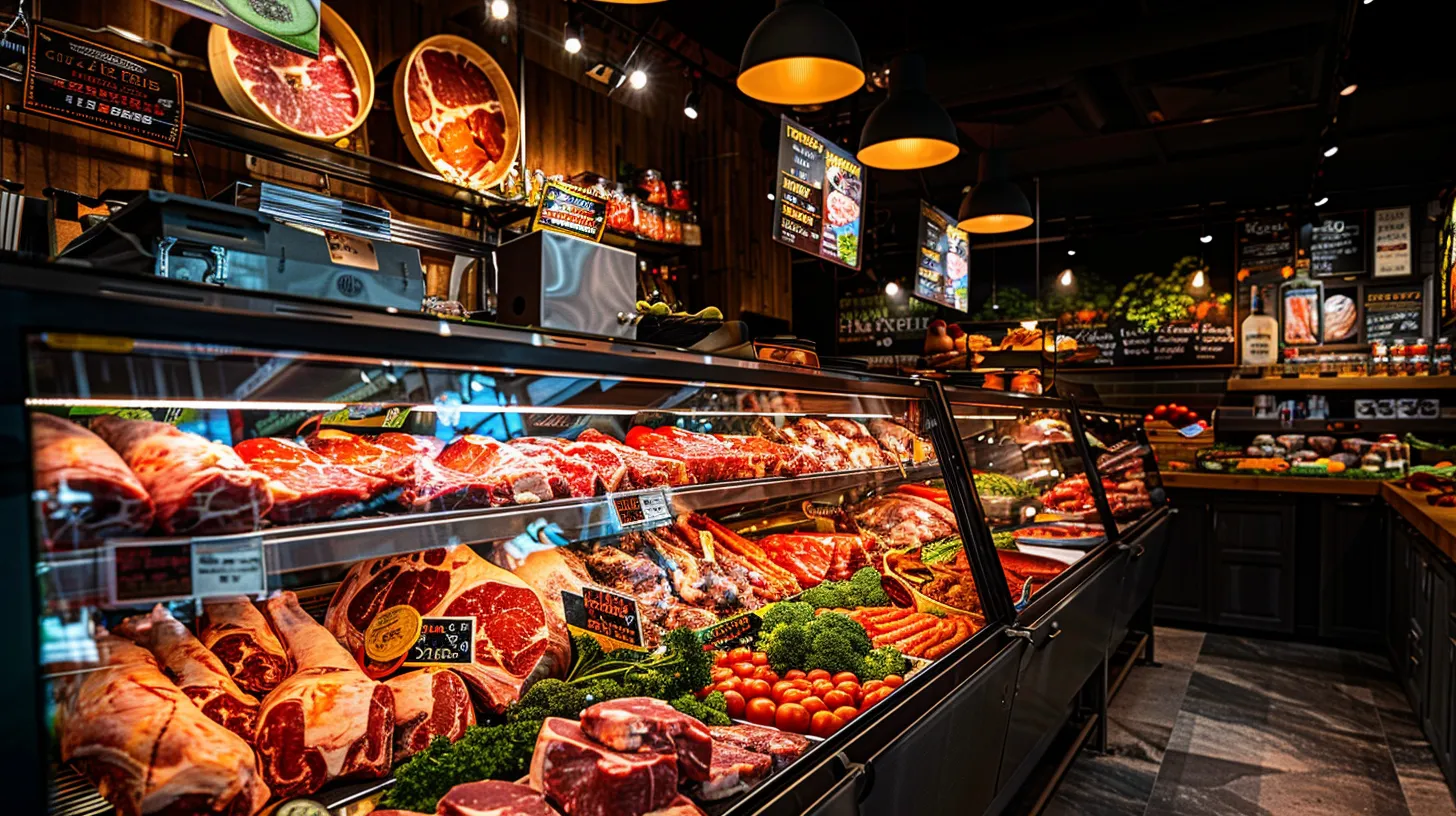
Expertise in meat shops encompasses several key aspects that contribute to overall quality assurance. The training and skills of butchers are essential for mastering meat preparation techniques, ensuring consistent cuts and flavors. Customer service plays a vital role in shaping quality perception, as knowledgeable staff enhance the shopping experience. Additionally, a strong community reputation reinforces trust, further distinguishing premium meat shops in the marketplace.
By examining these components, it becomes evident how vital each aspect is to the success and quality of a meat shop, connecting directly to the experience offered to discerning customers.
Training and Skills of Butchers
The training and skills of butchers are essential for maintaining high standards of quality in meat shops. Skilled butchers possess extensive knowledge of various cuts, enabling them to prepare meat optimally for flavor and tenderness. Their expertise not only ensures that customers receive the best selections but also enhances the overall shopping experience, as customers benefit from informed guidance on preparation and cooking techniques.
Techniques Used in Meat Preparation
Meat preparation techniques in premium butcher shops are critical for ensuring quality and flavor. Skilled butchers utilize methods such as precise trimming and cutting to enhance the appearance and texture of each cut. This attention to detail not only maximizes the meat‘s culinary potential but also ensures consistency in presentation, which is vital for consumer satisfaction.
Furthermore, expertise in marinating, seasoning, and aging is essential for elevating the overall quality of the meat. Butchers often experiment with different marinades to complement specific cuts, enhancing their natural flavors. By engaging with customers and sharing recommendations based on their needs, knowledgeable staff can create a more personalized experience that fosters loyalty and trust in the meat shop’s offerings.
Customer Service and Its Influence on Quality Perception
Customer service serves as a cornerstone in shaping quality perception at meat shops. Knowledgeable staff who can offer guidance on selecting cuts and preparing meals enhance the shopping experience, helping consumers make informed decisions. This interaction builds trust and confidence in the quality of products offered, as customers feel supported in their choices.
Moreover, attentive customer service fosters relationships that encourage repeat business. When butchers engage with customers, share preparation tips, and listen to their preferences, it creates a welcoming atmosphere that speaks to the quality of the establishment. This personalized attention not only enhances satisfaction but also reinforces a meat shop’s reputation for excellence in service and product quality.
Community Reputation and Its Role in Quality
Community reputation plays a vital role in establishing the quality of meat shops, as it directly influences consumers’ trust and confidence in their offerings. Premium establishments thrive on positive feedback from satisfied customers, which is often shared through word-of-mouth and online reviews. When meat shops prioritize excellence in both product quality and customer service, they can build a solid reputation within their communities, attracting new clientele seeking reliable sources for quality meats.
An exemplary community reputation also reflects a meat shop’s commitment to ethical practices, responsible sourcing, and engagement within the local area. Consumers increasingly favor businesses that build relationships with local farmers and promote sustainability, which in turn enhances the shop’s brand image. By actively participating in community events and fostering connections, these establishments demonstrate their dedication to quality not only in their products but also in their contributions to the community, reinforcing customer loyalty and satisfaction.
Expert butchers know that excellence starts with careful selection. Understanding what consumers truly value in their meat shop experience leads to better choices for all.
Consumer Choices and Meat Shop Quality Perceptions
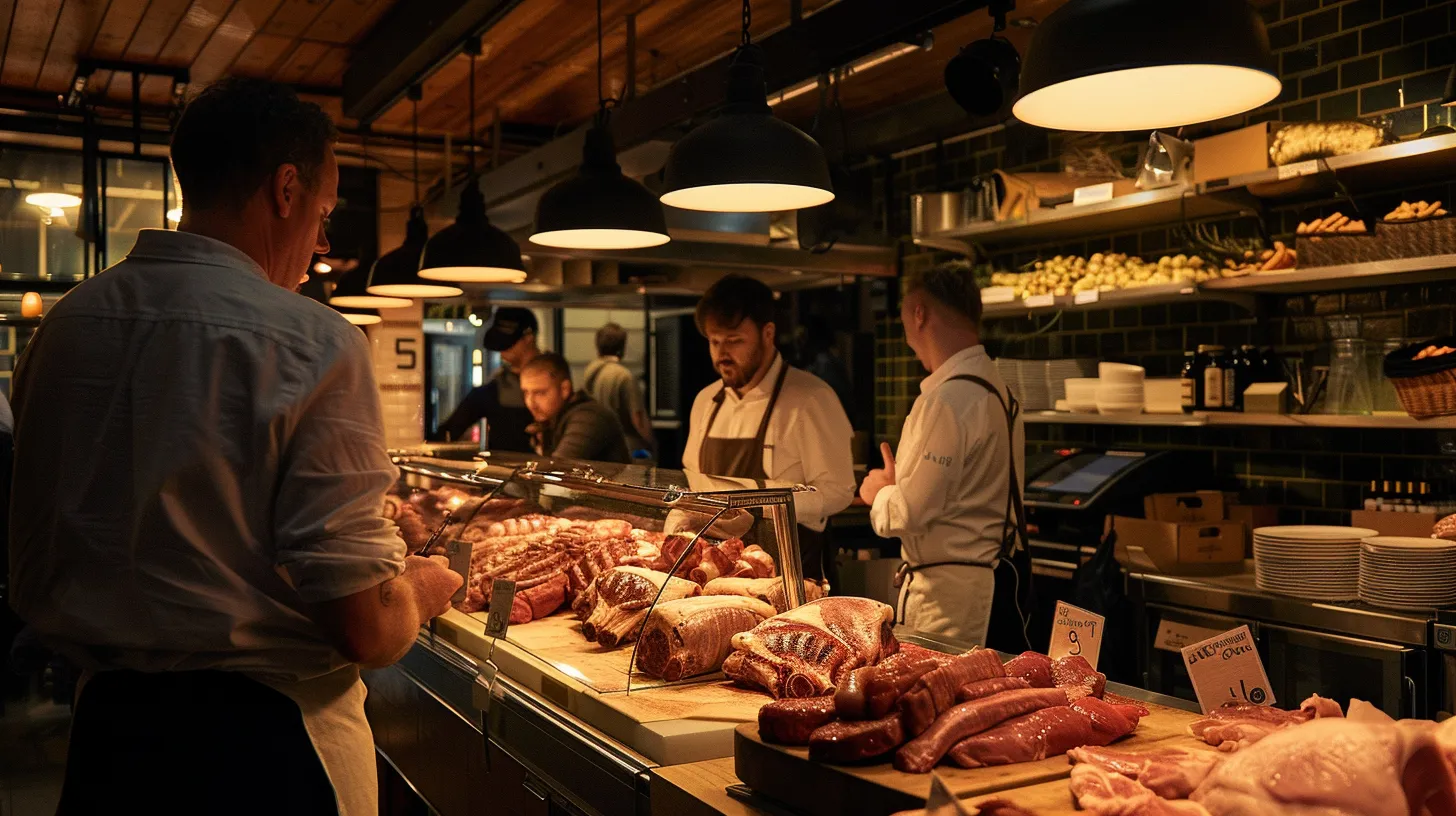
Consumer education significantly impacts buying decisions in meat shops, guiding shoppers towards quality selections. Feedback mechanisms encourage continuous improvement in service and product offerings, while the rise of farm-to-table initiatives fosters a deeper connection between consumers and their meat sources. Additionally, analyzing consumer reviews provides valuable insights into quality perceptions, helping establishments enhance their reputation and attract discerning customers.
How Consumer Education Impacts Buying Decisions
Consumer education significantly influences buying decisions at premium meat shops. When shoppers are informed about the importance of meat quality, such as sourcing practices and ethical treatment of animals, they are more likely to seek out establishments that align with these values. By understanding the distinctions between various cuts and grades of meat, customers can make selections that not only satisfy their taste preferences but also support their health and sustainability goals.
Moreover, as consumers become more aware of food origin and safety standards, their purchasing choices reflect a commitment to quality and transparency. Premium meat shops that actively engage in educating their clientele often experience increased customer loyalty. By offering insights into aspects like the benefits of grass-fedbeef or the nuances of aging processes, these shops empower consumers to make more confident decisions, ultimately enhancing their overall shopping experience.
Feedback Mechanisms for Improving Quality
Feedback mechanisms play a crucial role in improving quality at meat shops. By actively seeking input from customers through surveys and direct interactions, these establishments can identify areas for enhancement in both product offerings and service. This continuous feedback loop allows meat shops to adapt to changing consumer preferences, ensuring they meet the expectations of discerning customers looking for premium quality meat.
Furthermore, implementing systems for gathering feedback helps meat shops build a reputation grounded in transparency and accountability. For example, a butcher shop may encourage customers to share their experiences and suggestions regarding specific cuts or cooking techniques. By responding to this feedback, the shop not only fine-tunes its selection but also strengthens customer relationships, fostering loyalty among patrons invested in quality meat sourcing and preparation.
The Rising Trend of Farm-to-Table Initiatives
The rising trend of farm-to-table initiatives reflects a growing consumer demand for transparency and quality in meat sourcing. By connecting local farmers directly with consumers, these initiatives ensure that meat is fresh and adheres to high standards of ethical treatment and sustainability. Customers increasingly appreciate knowing where their food comes from, enhancing their confidence in meat selections from local butchers.
This direct supply chain not only supports community agriculture but also highlights the unique qualities of locally sourced meat. For instance, many premium meat shops emphasize their partnerships with nearby farms, showcasing how these relationships contribute to the overall flavor and quality of the meats. As consumers become more educated about their food choices, the emphasis on farm-to-table sourcing becomes a significant factor influencing their buying decisions and loyalty to specific butchers:
| Farm-to-Table Benefits | Consumer Impact |
|---|---|
| Freshness and Flavor | Higher satisfaction with taste |
| Support for Local Farmers | Stronger community ties |
| Transparency in Sourcing | Increased consumer trust |
| Ethical Treatment of Animals | Positive brand perception |
Analyzing Consumer Reviews and Their Importance
Consumer reviews play a significant role in shaping perceptions of meat shop quality and can heavily influence potential customers. Positive feedback often highlights aspects such as exceptional flavor, freshness, and customer service, providing insights that guide new shoppers toward trustworthy establishments. For instance, a meat shop praised for its high-quality cuts, including grass-fedbeef and artisanal sausages, may attract discerning customers who prioritize superior meat selections in their culinary endeavors.
On the other hand, constructive criticism in reviews can indicate areas for improvement, urging meat shops to enhance their product offerings and customer experience. For example, feedback regarding inconsistent freshness or lack of transparency can lead shops to evaluate their sourcing practices or adopt new quality assurance measures. By actively analyzing consumer reviews, meat shops can better align their services with customer expectations, fostering loyalty and reinforcing their reputation as leaders in quality within the community.
Conclusion
Meat shop quality distinctly separates premium establishments from the rest, demonstrating their commitment to superior sourcing and ethical practices. Customers prioritize transparency regarding meat origins, inspections, and freshness indicators, which significantly influence purchasing decisions. Understanding the nuances of meat quality—including grading classifications, preparation techniques, and seasonal sourcing—empowers consumers to make informed choices. By fostering trust and emphasizing high standards, quality meat shops enhance customer loyalty and satisfaction, solidifying their reputation in the industry.

